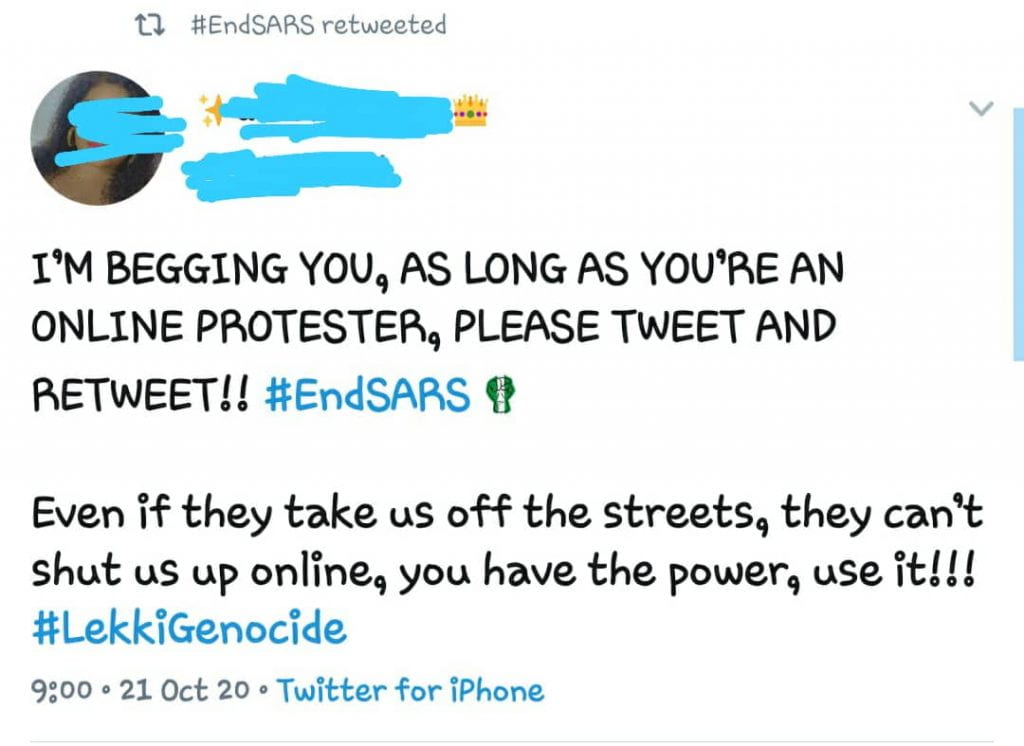“We are only as strong as we are united, as weak as we are divided.”
― J.K. Rowling
The concept of Collective Action is based on a group of people with the same interest, goals and in the same class of subjectivity or prejudice from a governing power or authority, looking to achieve freedom, higher pay, change in governance style or even democracy.
The Social Identity Model
Social identity theory originated from the conviction that group membership can help people to instil meaning in social situations. (Ellemers, N. 2020).
The Social Identity Model of Collective Action (SIMCA) here is the Large Group Collective Action.


The Social Identity Model of Collective Action (SIMCA) here is the Large Group Collective action.
The Lekki Massacre: The Outcome
20th October 2020 The #Endsars movement is categorised as a Collective Action. The Protest was cut short by what is suspected to be the execution of a Propaganda by the government due to the series events that happened after Lekki Massacre. The hoodlums hijack, the beaming fake news about the massacre and some punitive moves against identified onsite protesters.

A Cross Section of Protesters.
This Collective awareness (Kielbowicz and Scherer 1986) allowed the audience to relate to the grievances. A slogan Sorosoke werey was adopted creating a binary opposition to the older generation.
The Nigerian Youth were looking to gain freedom which they were able to draw attention as as noted by (Rucht, 2004), these actions expanded the scope of the struggle by drawing sympathies and new recruits from previously confused “third parties” from the general public and interest groups.
Social Media
The YouTube allows for both Audio-Visual content, Twitter for Text majorly but with allowance for Videos and Pictures, Facebook and Instagram allow flexibly for live engagements whereby WhatsApp for messaging, pictures videos and sharing of location.
The collective action (#EndSars) had a recognisable audience online, they were famously referred to as online protesters. The impact was felt as the community had Fundraisers who supported students who were online with ‘data’ for internet access to enable them tweet mercilessly.


Yomi Kazeem in his report says
“One of the core components of the ongoing protests has been the seamless transition between online and offline campaigns. Mainly using Twitter and WhatsApp, young people have rallied and mobilized waves of protests to locations across the country with pretty simple formulas.”
It is however of great concern that inasmuch as people’s choices are largely influenced by available heuristics, whereby a risk is perceived as greater than it actually is because of recent exposure, (Sunstein C. R 2002) the protesters went on with little or no adherence to the safety measures for COVID-19 Times, the will to be heard did not sustain that perception.
For Further Reading or Information:
https://nervemedia.org.uk/world-news/endsars-movement-changed-nigeria/
https://edition.cnn.com/2020/10/13/africa/global-end-sars-protests-nigeria-intl/index.html
https://edition.cnn.com/2020/10/13/africa/global-end-sars-protests-nigeria-intl/index.html
https://qz.com/africa/1916319/how-nigerians-use-social-media-to-organize-endsars-protests/
https://www.weforum.org/agenda/2020/12/nigeria-endsars-police-brutality-protest/
References
Chan, M., 2017. Media Use and the Social Identity Model of Collective Action: Examining the Roles of Online Alternative News and Social Media News. Journalism & Mass Communication Quarterly [online] 94(3), 663-681
Ellemers, N. 2020. Social identity theory. Encyclopaedia Britannica. [online]. Available from: https://www.britannica.com/topic/social-identity-theory [Accessed 30th January 2021]
Fukuzawa, A. Inamasu, K. 2020 Relationship between the internal locus of control and collective action: A comparison of East Asian and Western Countries. Asian Journal of Social Psychology [Online], 23(3), 349-359
Open University,2020. Health, Sports & Psychology [ online]. Available from https://www.open.edu/openlearn/health-sports-psychology/social-psychology-and-politics/content-section-3.3 [Accessed 30th January 2021]
Siegal, G. Siegal, N. and Bonnie, R.J., 2009. An Account of Collective Actions in Public Health. Am J Public Health [online], 99(9), 1583–1587.

